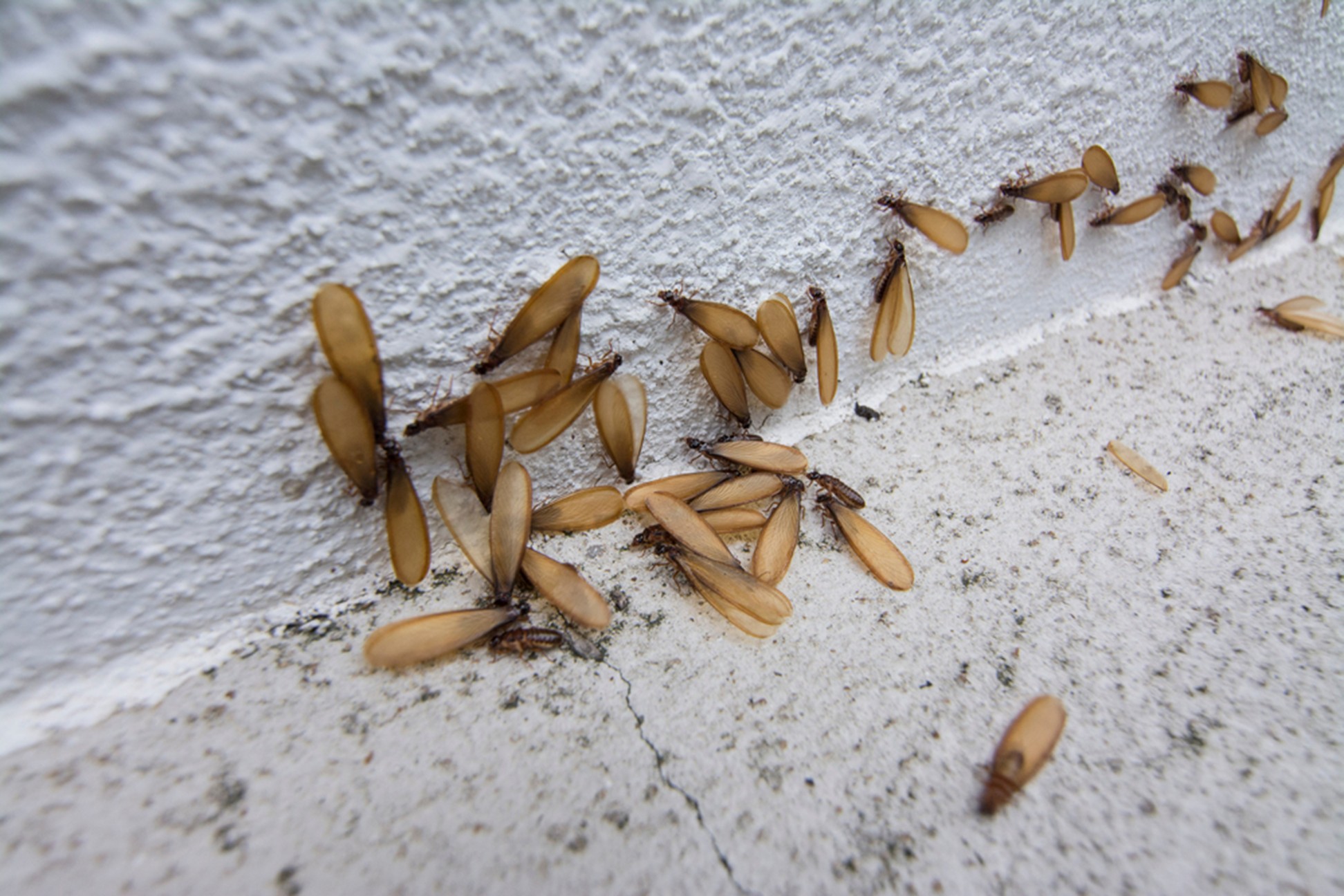Aussie summers are made for living outside. Deck chairs, a barbecue sizzling away, perhaps a spritz in hand while the kids or your mates take refuge under the pergola. It’s a simple scene to imagine, and one that most of us would like to protect. But nothing puts a damper on your plans faster than learning that your deck isn’t as structurally sound as it seems, because termites have been silently turning it into their all-you-can-eat buffet.
Catching the problem early is the difference between a simple treatment and a full (not to mention, expensive) rebuild. The tricky part is that termites don’t always wave a big red flag. They are sneaky, subtle, and often go unnoticed until serious damage has already been done. This is why the early warning signals are important. If you know where to look, you can prevent an infestation before it costs you thousands.
Here are some of the most common signs to watch for around your deck or pergola.
Spotting Flying Termites Around Your Deck
If you step outside on a warm, humid night and notice tiny insects swarming your outdoor lights, that’s often your first warning sign that flying termites are lurking. Their sole purpose in life is to locate new places to establish colonies, so if they’re congregating around your deck or pergola, the rest of the colony most likely isn’t far behind.
It’s easy to confuse them with flying ants and that’s why many people tend to ignore them initially. The key differences are straight antennae and equally sized wings. Ants have bent antennae and one set of wings bigger than the other. If you have flying termites swarming around, don’t ignore them. It’s basically their way of saying: “We’re moving in.”
Hollow Or Soft Timber
Take a walk on your deck and pay attention to how it feels under your feet. A solid deck should feel sturdy and firm. If the boards seem a little spongy or sound hollow when you tap on them, that’s a telltale sign that termites are already inside. Termites love to tunnel through the middle of timber, leaving just a thin outer layer behind. The most deceiving part is that things may look perfectly fine on the outside, but these unwanted critters can cause some serious issues structurally.
Don’t ignore it if you feel even one dodgy plank. Termites spread quickly once they’re in, and what looks like one small problem can actually be the start of a much bigger headache. Try tapping a few different spots with a screwdriver handle or something solid. If it sounds strangely empty compared to the rest, that’s a red flag.
For better long-term protection, choosing naturally termite-resistant timbers like Heartwood Ironbark can help reduce the risk of future infestations.
Mud Tubes And Strange Markings
Termites don’t like being in the open. In sunlight and wind, they dry out quickly, so they construct protective mud tunnels to move around safely. These little tracks often show up on the sides of decks, along pergola posts, or even climbing nearby walls. At first glance, they look like thin streaks of dried mud, no bigger than a pencil line. If you break one open, you might even spot termites moving inside.
But mud tunnels aren’t the only sign. You may also notice rippling, blistering or bubbling that appears under paint or sealant because termites feed just below the surface and disturb the layers of timber and finish. A lot of people mistake it for water damage or normal wear, but if those odd marks keep popping up, it’s worth taking seriously.
Piles Of Wings And Other Leftovers
When termites swarm, they leave a mess behind. One of the clearest signs is piles of discarded wings. You will often find them in corners of the deck, stuck in spider webs or scattered on outdoor furniture. On their own they look small and harmless, but together they point to a swarm that’s either just happened or is still happening nearby.
Some species of termites also deposit droppings, which are referred to as frass. Frass has an appearance that’s very similar to sawdust or fine sand, and you will typically see it in tiny mounds next to the holes where the termites are getting into wood. It’s easy to sweep wings or frass away without thinking much of it, but they’re actually early clues that a colony is active close to you, and it’s time to protect your pergola.
Clicking Sounds In The Wood
Termites aren’t completely silent. Soldier termites make faint clicking or tapping noises when they sense danger, banging their heads against tunnel walls to warn the rest of the colony. It sounds odd, but on a quiet night, you can sometimes hear it if you press your ear to the timber and listen closely.
It won’t sound super loud or dramatic, more like a faint, irregular tapping. Most people are surprised when they first realize what it is. Combine that sound with hollow-feeling wood, and you’ve got a strong sign termites are already inside.
Doors And Windows That Suddenly Stick
If you’ve noticed that your sliding doors, windows or shutters on your deck have begun sticking for no apparent reason, it may be more than just summer humidity. As termites eat through beams and supports, the wood may warp or bend. This makes doors harder to open or close properly.
This is one of those tricky ones where people just assume it’s the weather that’s making things act up. But if the issue remains after the humidity drops, it’s wise to suspect termites. Getting it checked early can save you from repairs that cost a whole lot more down the track.
Swarms Of Bugs Hanging Around Lights
Outdoor lights always attract insects, but if you’re seeing swarms clustering around your deck lights night after night, it’s worth paying closer attention. Like other insects, flying termites are attracted to light, especially in warm, damp weather, so your cozy and romantic pergola lighting could serve as a beacon for them.
It’s easy to brush it off as moths or beetles, and sometimes it is. But if you keep finding wings on the ground the next morning or the swarms seem particularly dense, there’s a good chance termites are part of the crowd. That means your deck could be right in their sights.
When To Call In Help
Finally, spotting these signs on your own is a very good first step, but termites are very crafty. They can dwell inside beams, posts and even in the soil without showing much on the surface. When in doubt, it’s always a good idea to enlist the help of a licensed pest inspector.
Inspections once a year are strongly recommended in Australia, especially if you live in a warm or coastal area where termites thrive. Professionals use tools like moisture meters and thermal imaging to pick up activity before it becomes obvious to the naked eye. Getting on top of things early on will not only save your deck or pergola but can also save you thousands of dollars in repairs.
Protect Your Outdoor Spaces Before It’s Too Late
Your deck or pergola is more than just some timber. It’s where you chill out, eat, and spend time with people you care about. Termites put that at risk, but they don’t have to win. By watching out for early signs, you give yourself a much better chance of protecting your outdoor space.
The best approach is quite simple. Keep an eye on your timber, check for anything unusual, and don’t be afraid to call in the pros if something looks off. At the end of the day, catching these uninvited guests early is a whole lot cheaper, easier, and less stressful than dealing with a collapsing deck.


